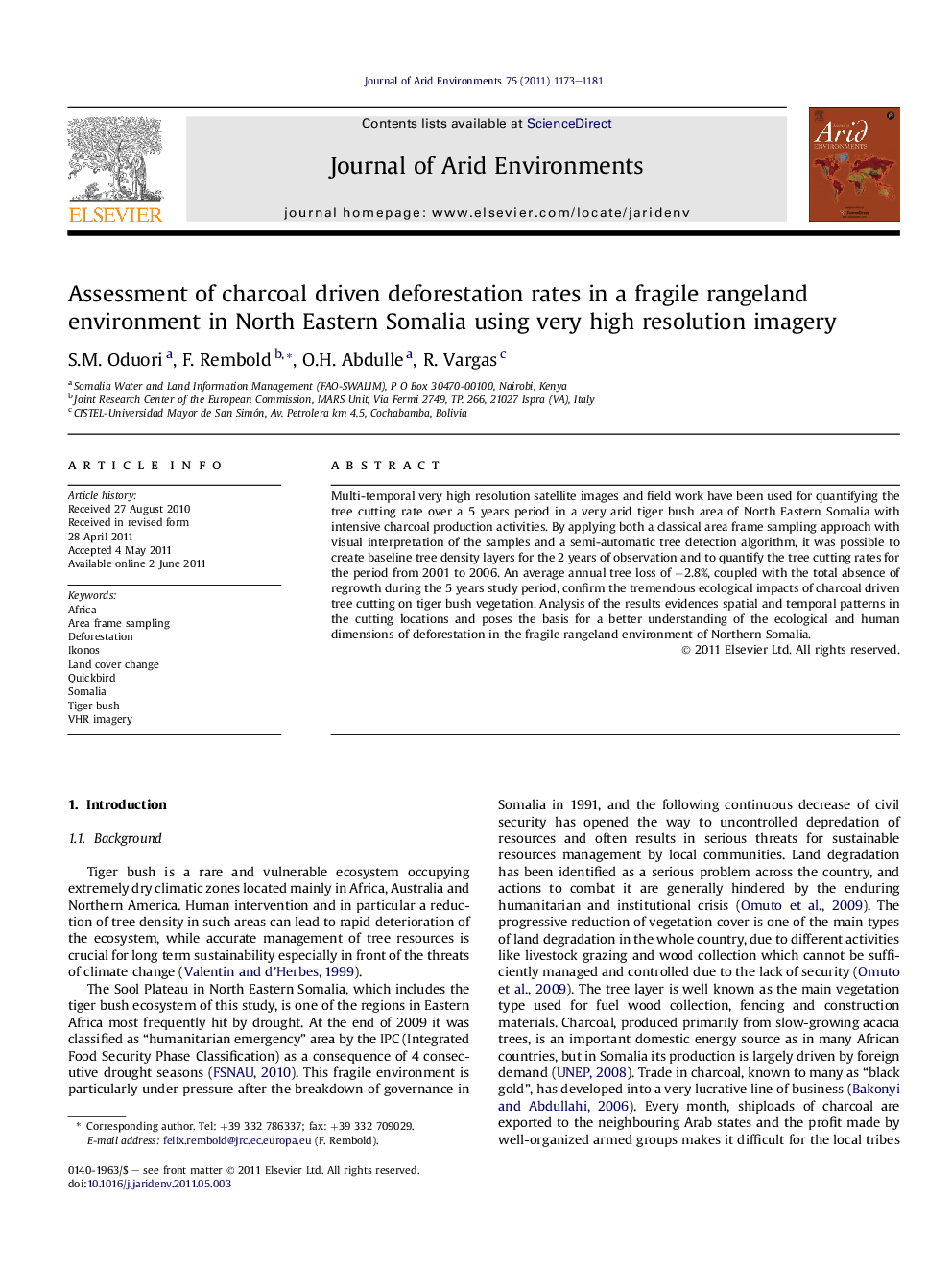| Article ID | Journal | Published Year | Pages | File Type |
|---|---|---|---|---|
| 4393581 | Journal of Arid Environments | 2011 | 9 Pages |
Multi-temporal very high resolution satellite images and field work have been used for quantifying the tree cutting rate over a 5 years period in a very arid tiger bush area of North Eastern Somalia with intensive charcoal production activities. By applying both a classical area frame sampling approach with visual interpretation of the samples and a semi-automatic tree detection algorithm, it was possible to create baseline tree density layers for the 2 years of observation and to quantify the tree cutting rates for the period from 2001 to 2006. An average annual tree loss of −2.8%, coupled with the total absence of regrowth during the 5 years study period, confirm the tremendous ecological impacts of charcoal driven tree cutting on tiger bush vegetation. Analysis of the results evidences spatial and temporal patterns in the cutting locations and poses the basis for a better understanding of the ecological and human dimensions of deforestation in the fragile rangeland environment of Northern Somalia.
► We use VHR data to count trees in a tiger bush area in Somalia in 2001 and 2006. ► We test both classical area frame sampling and automatic tree detection. ► Charcoal driven cutting occurred at a 5 years rate of −12.98% and no regrowth. ► Feasibility of the automatic detection depends on image availability and quality.
